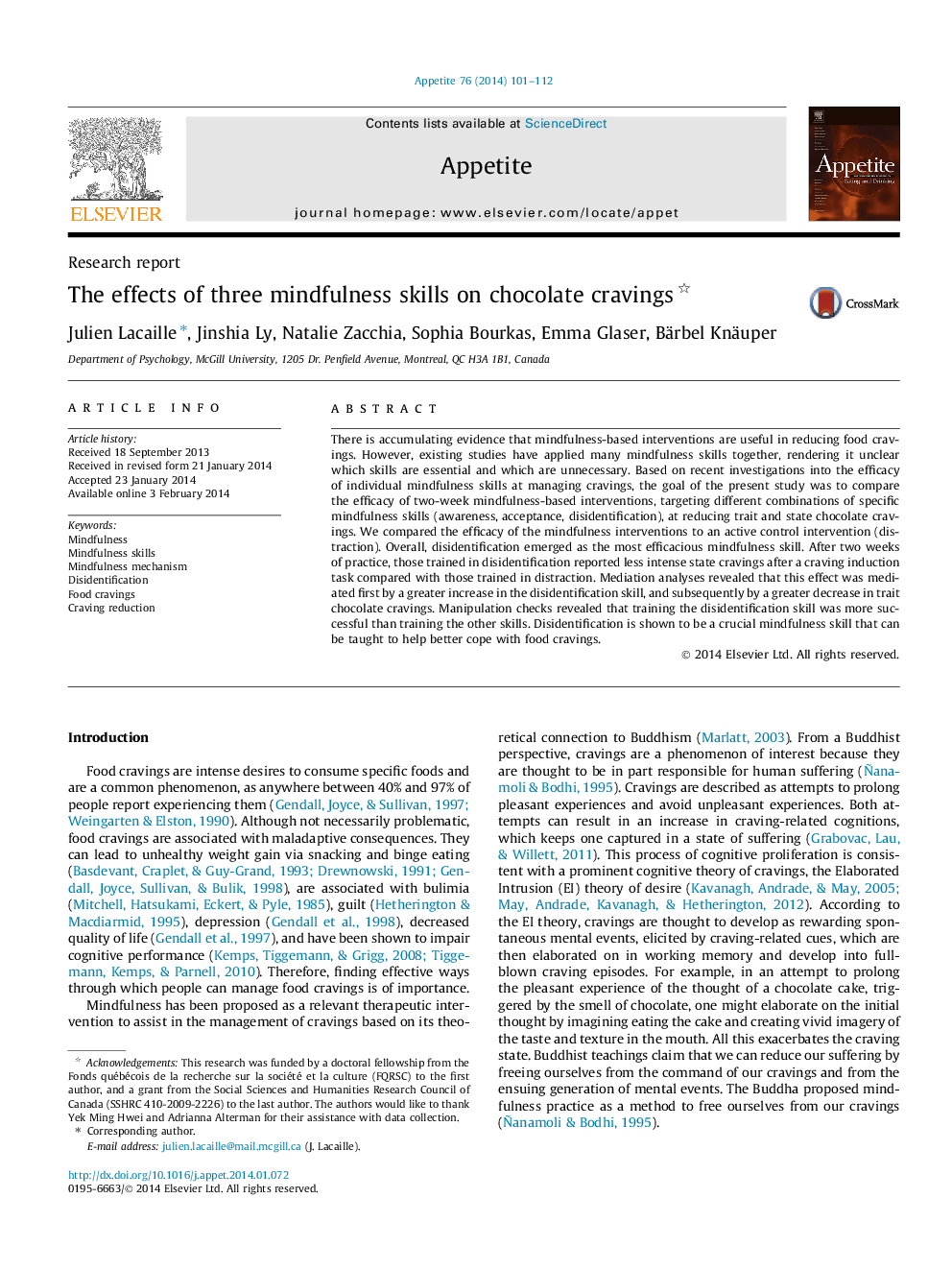| Article ID | Journal | Published Year | Pages | File Type |
|---|---|---|---|---|
| 939501 | Appetite | 2014 | 12 Pages |
•Disidentification training leads to reductions in trait and state food cravings.•Reduced trait cravings are explained by increased disidentification skills.•Reduced state cravings are not explained by increased disidentification skills.•Reduced state cravings are explained by decreased trait cravings.•Disidentification is a skill that can be learned quickly to cope with food cravings.
There is accumulating evidence that mindfulness-based interventions are useful in reducing food cravings. However, existing studies have applied many mindfulness skills together, rendering it unclear which skills are essential and which are unnecessary. Based on recent investigations into the efficacy of individual mindfulness skills at managing cravings, the goal of the present study was to compare the efficacy of two-week mindfulness-based interventions, targeting different combinations of specific mindfulness skills (awareness, acceptance, disidentification), at reducing trait and state chocolate cravings. We compared the efficacy of the mindfulness interventions to an active control intervention (distraction). Overall, disidentification emerged as the most efficacious mindfulness skill. After two weeks of practice, those trained in disidentification reported less intense state cravings after a craving induction task compared with those trained in distraction. Mediation analyses revealed that this effect was mediated first by a greater increase in the disidentification skill, and subsequently by a greater decrease in trait chocolate cravings. Manipulation checks revealed that training the disidentification skill was more successful than training the other skills. Disidentification is shown to be a crucial mindfulness skill that can be taught to help better cope with food cravings.
